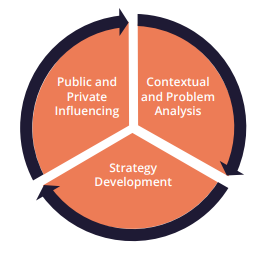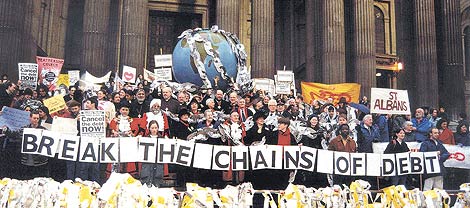
What are your favourite, well-documented examples of a) public campaigning and b) influencing developing country and donor governments? I’m asking because, as part of the LSE’s impending training programme for senior aid peeps, part of the ‘Global Executive Leadership Initiative’. I have to put together brief annotated ‘further reading/listening/watching’ lists on those two issues. I want more examples of donors and non-NGO actors driving change, plus my current draft involves far too much Oxfam and self-citation (no change there then….).
I’m looking for brief, analytical summaries, which show the combination of context analysis, stakeholder mapping, luck and learning that go into most successful exercises in influencing. Here are the drafts – over to you.

Campaigns to Influence, Annotated Further Reading
Books and Book Chapters:
D. Green, ‘The Power of Advocacy’ and ‘Putting it All Together’, chapters 11 and 12 in How Change Happens, (OUP, 2016). Free to download here
Final chapters, pulling together theory and practice on power, systems and influencing.
N. Kuperus, M. Meeske, S. van Veen, Beating the Drum – how do influencing networks get results?, 2020
Oxfam Novib (Netherlands) research comparing nine examples of influencing networks (not single actors), falling into 3 camps: Influencing Intergovernmental Organizations; Influencing National Governments and Influencing at Multiple Levels. Blog summary here.
A. de Waal (2015) Advocacy in Conflict: Critical Perspectives on Transnational Activism. London: Zed Books. Chapters 1, 2, 6, 7 and 12. FP2P Review.
A highly critical look at some of the ineffective and mistaken approaches (think Kony 2012) used in INGO advocacy.

Papers:
R. Mayne, C. Stalker, A. Wells-Dang and R. Barahona, How has Oxfam’s approach to Influencing evolved over the last 75 years? (2019)
Stuffed full of enlightening case studies and should be of interest to anyone who wants to understand how INGOs developed their current interest in advocacy, lobbying, campaigns etc. Blog summary with links here.
Websites:
UN Behavioural Science Group
UN Innovation Network initiative, with some fascinating case studies of how to ‘nudge’ behaviours in a progressive direction. Eg Vaccine hesitancy: 10 lessons from chatbotting about COVID-19 in 17 countries (World Bank) or Why Do People Do What They Do? A Social Norms Manual for Zimbabwe and Swaziland (UNICEF)
Blogs:
Putting Positive Deviance into Practice: A brilliant UN Women initiative on domestic violence
An example from Moldova, where according to the woman in charge of UN Women, ‘we had never asked the survivors if they could speak up, talk in public. It was totally new for us.’ The results are impressive, and the methodology fascinating.
Influencing Host and Donor Governments
Books:
J. Sidel and J. Faustino, ‘Thinking and Working Politically in Development’ (Asia Foundation, 2019).
Looks at experience of the celebrated Coalitions for Change (CfC) programme in the Philippines, which has achieved an impressive track record in governance reforms from tax and excise to cycle routes in Manila. Not the most user-friendly (no exec sum, no index), but at least it’s open access – download here. Or read Duncan Green’s review, and his podcast and blog from a 2018 visit.
M. Andrews, L. Pritchett and M. Woolcock, Building State Capability: Evidence, Analysis, Action (2017)
Sets out the thinking behind Harvard’s ‘PDIA’ (Problem-Driven Iterative Adaptation) approach, a tried and tested methodology for internal reforms in governments where there is an ‘authorising environment’. Open Access here. Review here.
Papers:

J.W. Busby (2007) ‘Bono Made Jesse Helms Cry: Jubilee 2000, Debt Relief, and Moral Action in International Politics’. International Studies Quarterly, 51: 247-75. (free to download here)
Academic case study of the Jubilee 2000 campaign for developing country debt relief in the 1990s, which contributed to donor initiatives that provided billions in debt relief to the poorest countries.
MacAuslan (2008) India’s National Rural Employment Guarantee Act: A Case Study for How Change Happens
Fascinating account of one of the origins of the world’s largest cash-for-work programmes.
Websites:
Thinking and Working Politically Community of Practice.
Brings together academics and practitioners (especially donors), with a particular focus on governance reform. Events, publications etc.
Blogs:
Thinking and Working Politically in Economic Development Programmes – Some Sprints and Stumbles from a DFID Programme in Kyrgyzstan
Andrew Koleros (Palladium) and David Rinnert, (DFID) on an interesting example that breaks out of the governance bubble to address wider economic reforms (reforms to internal trade and tax laws).
How Oxfam and Save changed US aid on local ownership
Nice case study in influencing, showing the power of coming up with the right tool, in this case a graphic.
5 Lessons from Working with Businesses to Support Workers around the World
Reflections on the first 20 years of the UK’s Ethical Trading Initiative. Thoughts on working with stakeholders in the private sector.
Podcasts and Videos:
How does an INGO like Oxfam help Africa get a good deal from its Natural Resources?
Interview with Oxfam’s Gilbert Makore on national/regional INGO advocacy. (25m Podcast + blog)
Four female activists tell us what they need from their international allies.
Short video interviews with grassroots activists.
Over to you. Looking for examples that will generate new ideas and insights, please, with one sentence on why they are so good.